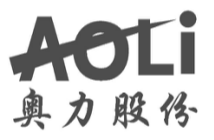Some packaging and printing manufacturers and ink manufacturers sometimes encounter the following two situations:
One is that there is no problem when packaging and printing products are printed in the low-temperature season or during use, and during the printing or use in the high-humidity season, the graphic ink films are stuck to each other.
The second is that the packaging and printing products have no problem when printing or laminating in the high-humidity season. When used in the low-temperature season, the upper and lower films of the printed products of the commercial packaging have no adhesion.
For this reason, after consulting a large number of related printing faults and processing methods and seeing and testing the above two distinct printing faults in person, the author believes that the former is the thermoplastic resin softening point is too low or the ink system in the ink system. Containing an excessive amount of slow-drying solvent remains in the printed graphic ink film. Once the ambient temperature rises, it will soften and stick back due to the release of the solvent.
The latter is caused by improper or excessive use of the dispersion aid in the ink or compound adhesive system. Such a simple conclusion does not seem to be convincing enough. To this end, this article combines the problems of adhesion ---- ink adhesion and lamination of several technical issues to talk about my humble opinion, so as to discuss with colleagues in the printing and ink industry.
1. Use pressure to solve the adhesion problem caused by too thick ink layer and adhesive layer.
The pressurization of the printing machine and the compound glue coating machine can make the adhesion between the printed graphic ink film layer and the coated compound glue layer reach tight and complete, and make the ink and glue flow under pressure, which is conducive to The molecules of the ink system and the molecules of the glue system diffuse and penetrate, thereby improving the adhesion and adhesion strength of the ink and the substrate, the glue and the printed graphic ink film.
Of course, the pressure should be such that it does not deform the ink film and glue film. That is to say, after pressurizing, the purpose is also to discharge excess ink or glue, reduce the thickness of the ink layer and glue layer, so as to ensure that the entire ink layer and glue layer are thin and uniform, dense, and prevent local under-ink or under-glue. Create voids. It can also prevent certain inks and compound adhesives from generating bubbles due to the discharge of volatiles when heated and solidified or cooled and matured.
2. Solve the residual solvent problem with a blower, etc.
In general, we use infrared drying in the packaging and printing process, in addition to drying, air cooling and even drying in the drying tunnel, the purpose of drying is to let the solvent in the ink and glue system volatilize and increase the viscosity, which is convenient for the operation of the ink film forming and glue compound process. At the same time, it can also make the ink and glue fully wet the surface of the substrate, which is conducive to its diffusion, penetration and adsorption. Therefore, the ink and glue with solvent need to be fully blown, infrared baking, etc., to force the solvent to evaporate and evaporate completely. Solvent-free, it can be laminated and bonded immediately after printing and coating.
Infrared, ultraviolet, blowing, baking, etc. depend on the evaporation rate and evaporation rate of the solvent, while the UV type depends on the light energy intensity, so that one photon absorbs one minute and the film formation drying time reaches the self-learning of ink and glue. Sex period, etc. It should not be too long to prevent the ink film and film from hardening (curing), the adhesion is not good, and the adhesion is not strong; nor should it be too short, so that the solvent volatilization, evaporation or crosslinking is not enough, resulting in poor adhesion fastness and The lamination strength of the glue is reduced.
We know that printing and laminating can be carried out at outdoor temperature, or under infrared, ultraviolet, heating and curing, or cold blowing and curing, or alternately using infrared heating and cold blowing, or alternating infrared and ultraviolet. . It depends on the curing (curing) temperature of the ink and glue. In particular, it is reasonable to remove the film after the ink film is formed and the compound glue is cured (cured).
Jiangsu Aoli New Materials Co.,Ltd
Jonas:aoli88@aoli-ad.com
